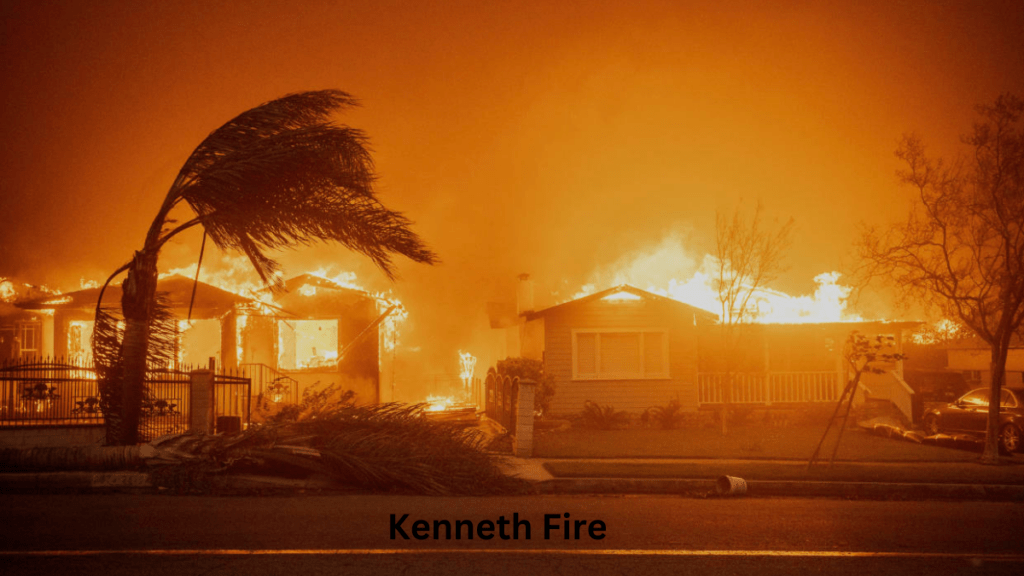The Kenneth Fire, which ignited on January 9, 2025, in the West Hills neighborhood of Los Angeles, is the latest in a series of devastating wildfires that have plagued the region. As firefighters battle to control the blaze, it is essential to understand the causes, the impact on the community, and the recovery efforts that are currently underway. In this blog post, we will explore these aspects of the Kenneth Fire, providing insights into how such events occur, their far-reaching consequences, and the steps being taken to return the area to normalcy.
What Caused the Kenneth Fire?
The Kenneth Fire appears to have been ignited under suspicious circumstances. According to early reports, arson is suspected as the cause of the fire, and an arrest has been made in connection to the incident. Authorities have indicated that they are investigating the fire’s origins and are following up on leads to determine whether there was any intentionality behind the blaze.
While human intervention is suspected, the conditions that led to the rapid spread of the fire were heavily influenced by environmental factors, including prolonged drought, high winds, and dry vegetation. These conditions have made Southern California more susceptible to wildfires, and the Kenneth Fire serves as a stark reminder of the region’s vulnerability to such disasters.
Key Contributing Factors:
- Arson Suspect: Early investigations suggest that arson may have played a role in sparking the fire.
- Climate Conditions: The ongoing drought in Southern California, combined with dry vegetation and high winds, made the fire spread uncontrollably.
- Proximity to Wildland-Urban Interface: The Kenneth Fire occurred near a suburban area, increasing the risk of structural damage.
The Impact of the Kenneth Fire on the Community
The Kenneth Fire has had significant effects on the residents of the West Hills neighborhood and surrounding areas. As of January 10, 2025, thousands of residents were forced to evacuate their homes due to the fire’s proximity. Firefighters are working around the clock to contain the blaze, but the destruction left in the wake of the fire is extensive.
Evacuations and Property Damage:
- Evacuations: The fire forced thousands of people to flee their homes, with evacuation orders affecting multiple neighborhoods. Emergency shelters have been set up to accommodate displaced residents.
- Structural Damage: Several homes and structures have been severely damaged or destroyed. Authorities are still assessing the full extent of the property damage, but initial reports indicate that the fire caused millions of dollars in losses.
- Traffic and Transportation: The fire has disrupted local traffic, with roads and highways being closed to ensure the safety of both evacuees and emergency responders.
Environmental Consequences:
- Air Quality: The Kenneth Fire has contributed to poor air quality in the area, exacerbating respiratory conditions and triggering health advisories.
- Wildlife Impact: Local wildlife, including birds and small mammals, has been displaced by the fire, with some species facing significant threats due to the loss of habitat.
The Role of Firefighting Efforts in Containing the Fire
As the fire rapidly expanded, local firefighters, aided by state and federal resources, sprang into action to contain the blaze. Firefighters have been using a variety of tactics, including aerial drops of water and fire retardant, ground-based crews, and bulldozers to create firebreaks and prevent the spread of the fire.
Despite the heroic efforts of the emergency responders, the Kenneth Fire has proven to be a challenging blaze to control due to the wind-driven conditions and the presence of dry, dense vegetation in the surrounding hills.
Key Firefighting Strategies:
- Air Support: Helicopters and planes have been employed to drop water and retardant over key areas of the fire.
- Ground-Based Crews: Firefighters on the ground have been working to dig trenches and create firebreaks to limit the fire’s spread.
- Mutual Aid: Firefighting teams from neighboring counties and states have been called in to assist in the effort.
Recovery and Relief Efforts
Once the fire is under control, recovery efforts will be essential to rebuilding the affected areas. Local government agencies, nonprofit organizations, and volunteer groups are already beginning to assess the damage and prepare for the long process of recovery.
Short-Term Relief:
- Evacuation Shelters: Emergency shelters have been set up to provide temporary housing, food, and medical assistance to evacuees.
- Financial Aid: Federal and state aid is expected to be allocated to assist in the recovery of individuals and businesses affected by the fire. Financial relief packages will be made available to those whose homes and livelihoods were lost.
Long-Term Recovery:
- Rebuilding Homes: Rebuilding efforts will be slow and expensive, with an emphasis on restoring homes to safer standards that can withstand future fires.
- Environmental Restoration: Rehabilitating burned landscapes and restoring wildlife habitats will take years, and efforts will focus on preventing soil erosion and ensuring that vegetation is re-established.
- Policy Changes: The Kenneth Fire may lead to increased regulations regarding land use and fire safety measures, including the creation of more fire-resistant infrastructure and the implementation of better evacuation strategies.
FAQs
Q1: What areas are most affected by the Kenneth Fire?
A1: The Kenneth Fire has primarily affected the West Hills neighborhood in Los Angeles, including nearby areas like Topanga Canyon and parts of the Santa Monica Mountains. Evacuation orders have been issued for multiple neighborhoods.
Q2: How can I help those affected by the Kenneth Fire?
A2: You can help by donating to relief organizations such as the Red Cross, volunteering with local organizations, or supporting fire victims through local community efforts.
Q3: What can I do to prevent wildfires?
A3: You can reduce the risk of wildfires by maintaining defensible space around your home, clearing dry vegetation, using fire-resistant materials, and reporting any suspicious activities that could lead to arson.
Q4: How long will it take for the fire to be fully contained?
A4: It is difficult to estimate an exact timeline, but given the intensity of the fire and the current weather conditions, it may take several days or even weeks for the fire to be fully contained.
Conclusion
The Kenneth Fire has been a devastating event for Los Angeles, but it also highlights the importance of preparedness and resilience in the face of natural disasters. As authorities work to contain the fire and help those affected, the community must come together to support recovery efforts and prevent future tragedies. The causes of the fire, including human actions and environmental factors, underscore the need for continued efforts to address climate change, improve fire management practices, and build more



